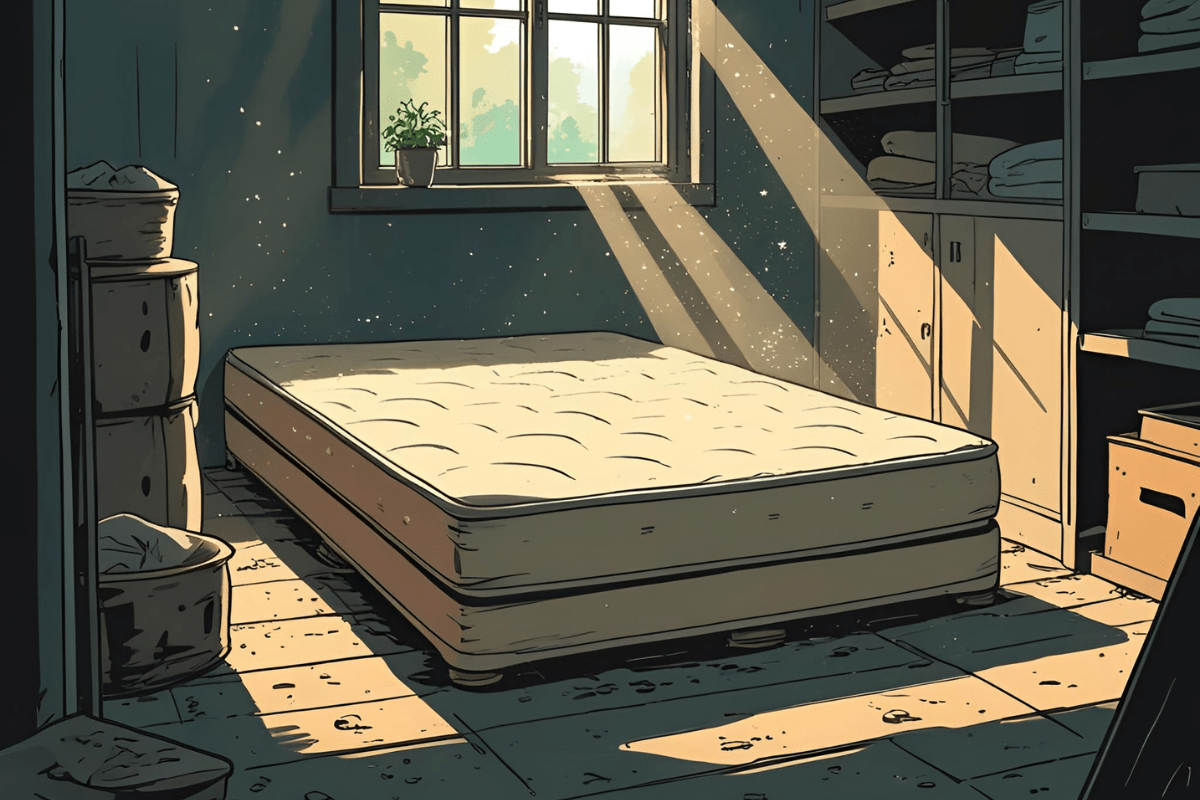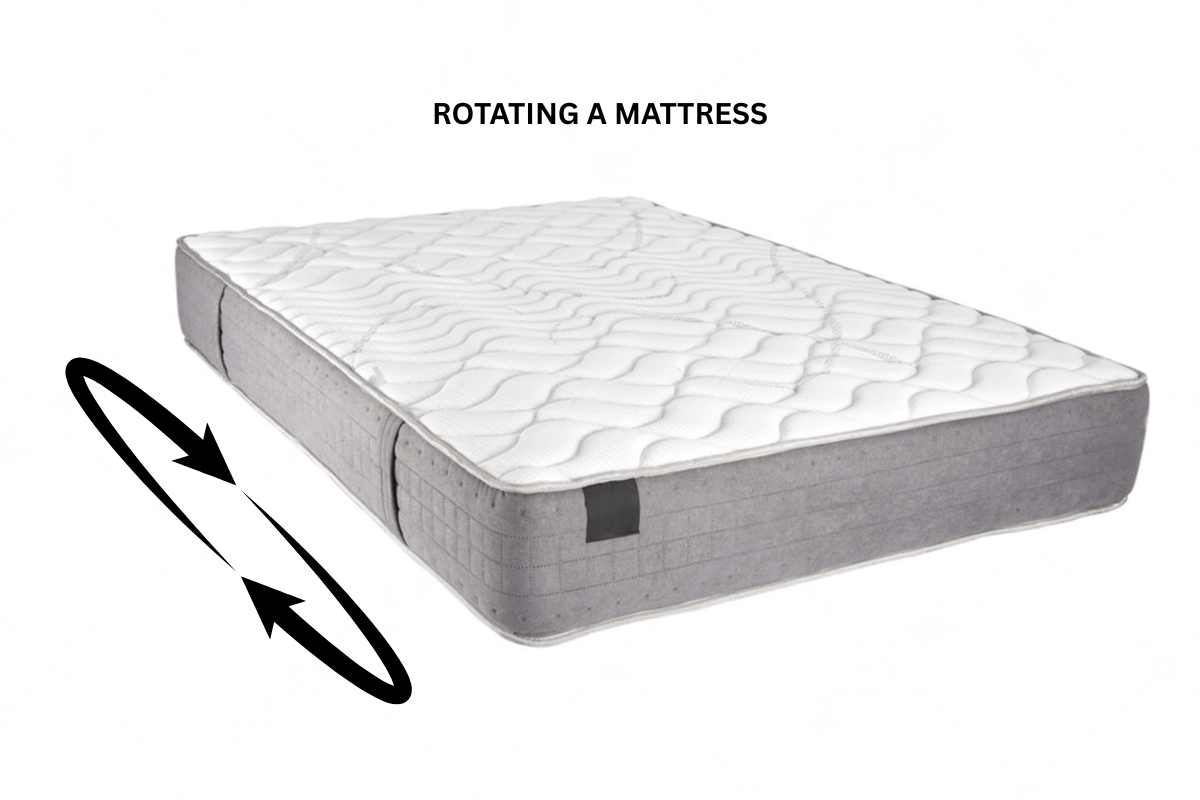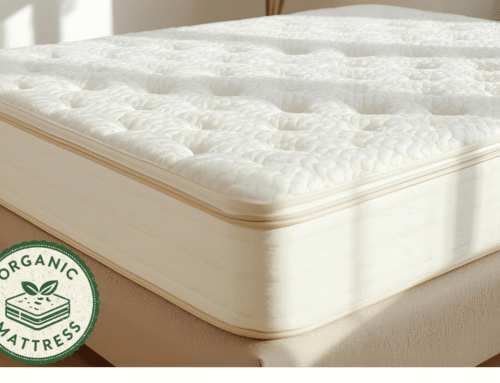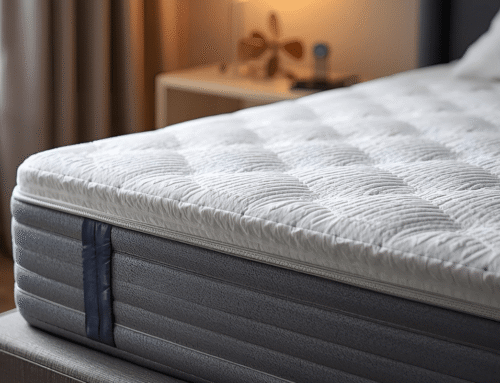Storing a memory foam mattress carefully is important to keeping it in good condition for future use. Memory foam is known for its softness and support, but improper storage can cause it to lose shape or develop lumps. Taking the right steps helps preserve its comfort and durability over time.
Memory foam mattresses are made from dense, viscoelastic materials, while gel memory foam varieties include cooling components that can also affect how they should be stored. Thickness is essential in how well the mattress resists pressure during storage, and pricing varies depending on size and features. These mattresses need time to fully expand when new, which is why understanding their structure and expansion behavior is part of knowing how to store them properly.
Memory foam mattresses typically last several years with proper care, but they do require periodic replacement to maintain optimal support and hygiene. It’s also important to let a new memory foam mattress fully expand before use, so sleeping on it before 48 hours can affect its shape and comfort. These factors highlight why proper storage is crucial to preserving the mattress’s lifespan and performance.
Let’s talk about practical tips to store a memory foam mattress safely. Choosing a clean and dry spot with enough ventilation and avoiding heavy pressure or folding can protect its structure. Wrapping it in a breathable cover helps keep dust and dirt away while allowing air circulation, so it stays fresh and ready for restful nights ahead.
Key Takeaways
- Vacuum thoroughly, treat stains with mild detergent, sprinkle baking soda to neutralize odors, then let the mattress air-dry completely to prevent mold or mildew.
- Use a moisture-permeable, fully sealed mattress bag to block dust, spills, and pests without trapping humidity.
- Lay the mattress flat on a stable floor or platform to maintain its shape, as storing upright risks sagging.
- Choose a cool, dry, humidity-controlled space away from basements or attics, and elevate the mattress to avoid floor moisture.
- When ready to use again, unwrap carefully, air it out, vacuum once more, and verify it fits your bed frame before sleeping.

Clean and Dry Your Mattress Before Storing
Vacuuming both sides of the mattress helps lift away dirt, pet hair, and allergens that build up over time. Effectively removing urine and other stains, thoroughly cleaning the mattress, and ensuring it is completely dry are essential steps before storage to prevent odors and damage.
A cloth with a bit of mild soap works fine for fresh spills or light stains. Letting it air dry fully under the sun or in a breezy room is important. Once it’s completely dry, a fabric mattress bag or even an old cotton sheet keeps it covered without locking in humidity. Plastic wrap sounds protective but traps moisture, which leads to unwanted smells or damage. Breathable material makes more sense for long-term storage.
Some people skip the preparation and regret it later. Pulling out a damp and musty mattress isn’t ideal. The extra steps upfront help it last longer and feel fresh months later. A little cleaning and proper airflow go a long way in keeping it in good shape.
Choose the Right Place to Store Your Mattress
Storing a memory foam mattress in the wrong place can lead to issues like odor, mold, or loss of shape. Cool, dry spaces that stay out of direct sunlight are ideal. Areas like garages, attics, and basements may seem easy to use, yet they’re often too humid or hot throughout the year. Some people prefer using temperature-controlled storage units, especially for long-term storage. At home, guest rooms or large closets tend to work well since the air stays more consistent. Exposure to heat or moisture, even for short periods, can change how memory foam feels and performs.
Plastic covers might trap moisture, so breathable covers or moving blankets seem to work better. Laying the mattress flat instead of on its side helps prevent bending or sagging. For anyone who’s stored one before, protecting it from temperature swings and moisture really does help preserve its shape and feel.
Store Your Mattress Flat If Possible
Standing a mattress upright for too long often leads to problems, especially with memory foam. The material tends to bend or lose shape over time, so it no longer feels the same. Some people tried storing it like that and ended up replacing it sooner than expected. A flat and clean surface usually works best, or a solid platform like wooden boards can help when space is limited. It needs support on the entire underside so it doesn’t slump or trap moisture. Some tried using slats, but those created pressure points that weren’t good either.
Stacking anything heavy on top often leaves the foam uneven, and some dents never go away. A few people placed boxes on theirs and noticed sagging even after a short time. It’s better to clear the space than risk a mattress that feels lumpy later on.
Because memory foam mattresses are flexible but delicate, moving them carefully is essential to avoid bending or folding that could damage their structure. Proper handling during relocation helps maintain their shape and ensures they remain flat and supported during storage.

Protect Your Mattress with a Cover
A breathable fabric cover helps keep a memory foam mattress clean during storage. It blocks dust and dirt without trapping moisture inside. Plastic bags can work too, but they need a small opening to let air flow or else the mattress can end up with a musty smell. Using a cover also lowers the chance of pest problems. Bugs or rodents sometimes sneak into storage areas, and an unprotected mattress can attract them. A clean and snug cover adds a simple layer of defense that helps avoid those issues.
Covers also help prevent damage from leaks or minor spills in the storage space. Even a small drip from a nearby item can seep into the foam if the surface is bare. A good-quality cover gives just enough protection to keep the mattress dry and in decent condition for longer.
Avoid Folding or Compressing Your Mattress
Memory foam bends easily, but that doesn’t mean it’s meant to be folded or rolled up again. Those tight folds can mess with the structure and leave permanent dents or uneven spots. Even if the mattress came compressed in a box, trying to roll it up again won’t end well. Some have tried folding theirs to make space or move things around, and the foam just didn’t recover the same way. The edges stayed curled or the middle sagged a bit, which changed how it felt to sleep on. Foam’s meant to support the body, not to be twisted like luggage.
The safest way to store one is flat, on a solid surface, with nothing piled on top. That helps the foam breathe and keeps its original shape over time. Tossing it in a corner or leaning it against a wall for weeks just isn’t worth the risk.
If compression is necessary for moving or temporary storage, it should be done carefully following manufacturer guidelines to avoid damaging the foam. Controlled compression, usually by professionals, can reduce mattress size without permanently harming its structure, unlike improper folding or rolling.

Keep Air Circulating
Good airflow helps a mattress stay fresh, even during storage. Some prefer propping it on pallets or slats to allow air underneath instead of leaving it flat on concrete or tile. Others open the storage unit briefly now and then just to let some air cycle through the space. Without airflow, it can start to smell musty or feel damp to the touch. Moisture gets trapped and doesn’t go anywhere, especially in humid places or during rainy seasons. That’s usually when people notice mold spots or that stale scent settling in.
Propping it up off the ground isn’t just for airflow. It also helps protect it from cold floors and unexpected leaks. Even a couple of wooden planks or extra boards from around the house do the job. Just enough to give air space to move around and keep things dry.
Check On Your Mattress Occasionally
Mattresses in storage tend to get ignored, especially when life gets busy. But checking on them every couple of months helps prevent surprises. Trapping moisture or lack of airflow can lead to mildew or even bugs hiding in the corners. It helps to lift the mattress and give it a light shake or a few gentle pats. That simple movement keeps the filling from settling too much in one spot and lets the air circulate a bit. Over time, pressure from stacked items or tight covers can cause the shape to change.
Noticing early signs like strange smells, tiny stains, or a damp feel means it’s easier to clean up before it becomes a problem. Just a quick glance or touch now and then keeps the mattress fresh and more likely to stay usable. No one wants to pull out a mattress months later only to find it ruined. Regularly checking on your mattress also reminds you to rotate it periodically and know when it’s time to replace it, which helps maintain its comfort and extend its lifespan.
Other Tips for Storing a Memory Foam Mattress
Rotating the mattress every few months helps prevent uneven wear, especially if it’s been used on one side more often. Some people say it keeps the surface feeling more balanced for longer. A 180-degree turn now and then can slow down that lopsided sinking feeling.
Keeping moisture under control matters more than most people think. Silica gel packets or even a small box of baking soda nearby can quietly absorb excess humidity. That way, the foam won’t start to feel musty or lose its bounce over time.
Sunlight tends to dry memory foam too much, which can make it feel stiff or cracked later on. A shaded storage space keeps the material from aging too fast. It also helps to slap on a label, especially if storage is crowded, so it’s easier to grab the right thing without unzipping every cover.
Adjusting firmness and temperature are also key to maintaining comfort. Taking steps to make your memory foam mattress firmer or cooler can improve its lifespan while stored. When it’s time to part ways with your mattress, knowing how to dispose of it responsibly ensures you’re taking care of both your home and the environment.

Bring Your Mattress Back to Life
Let the mattress rest in a clean, dry space where fresh air can circulate freely. Leaving it uncovered for a full day allows any musty or stored scents to clear out naturally. Some like to give the foam a gentle press or knead if there are soft spots, especially after being packed away for a while.
Memory foam often needs more than a few hours to return to its natural shape. Depending on the material and how long it was stored, it could take a couple of days. Some have noticed that the longer it’s allowed to settle, the more comfortable it feels afterward. A bit of patience helps during this part. Once the foam has eased back into place, it usually feels just as supportive as before. There’s a kind of reassurance that comes from seeing it fully expanded and knowing sleep will feel familiar again.
If the mattress doesn’t bounce back evenly, especially in high-pressure areas, it’s helpful to know how to fix dip in memory foam mattress and how to bring back firmness and comfort through simple adjustments and support techniques.
Final Thoughts
Storing a memory foam mattress isn’t as complicated as it seems if a few key things are kept in mind. It’s important to clean and thoroughly dry the mattress before storage to avoid mold or mildew. Choosing a cool, dry spot helps prevent moisture buildup and keeps the foam from breaking down over time.
Laying the mattress flat during storage is ideal since folding or standing it on edge can cause permanent dents or damage. Using a breathable cover protects the mattress from dust while still allowing airflow, which helps prevent odors and keeps the foam fresh. Checking on it periodically ensures no hidden issues develop.
Following these simple steps preserves the mattress’s comfort and support, so it feels ready for use when taken out of storage. A little attention during storage goes a long way in avoiding problems down the road. Proper care helps the mattress maintain its lifespan and overall condition.







